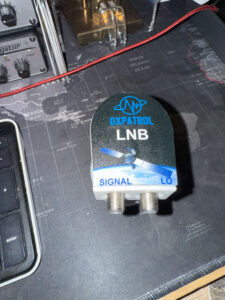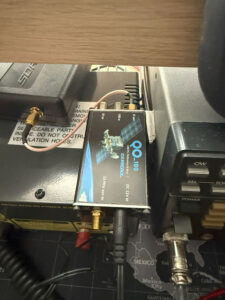The time has finally arrived. In less than 24 hours I , along with Charles (M0OXO) and Ady (G6AD), will be setting off on our annual adventure to London Heathrow airport (LHR) and the journey to Ham Radio 2025 in Friedrichshafen, Germany. 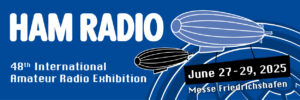
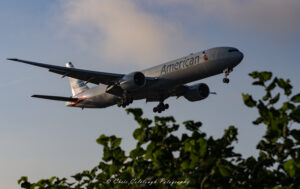 The day will start for Charles at around 04:00 when he leaves home to come to my house and then on to collect Ady from his home. We then go on to LHR and the Premier Inn on Bath road for a night ready for our flight at 06:30 – but this means we have to get to the airport for 03:30 so a second short nights sleep for us all. This first day is a relaxing day, usually spent out on the hill at the hotel watching and photographing the aircraft as the arrive or depart, depending on which way the wind is blowing, where it feels as if you can touch the aircraft. Last year I was there with my camera and a 24-120 lens, no need for my big zoom lens as is usual on aircraft photo shoots. And sitting in the hotel coffee lounge having a drink and some lunch, allowing us to get our social media up to date.
The day will start for Charles at around 04:00 when he leaves home to come to my house and then on to collect Ady from his home. We then go on to LHR and the Premier Inn on Bath road for a night ready for our flight at 06:30 – but this means we have to get to the airport for 03:30 so a second short nights sleep for us all. This first day is a relaxing day, usually spent out on the hill at the hotel watching and photographing the aircraft as the arrive or depart, depending on which way the wind is blowing, where it feels as if you can touch the aircraft. Last year I was there with my camera and a 24-120 lens, no need for my big zoom lens as is usual on aircraft photo shoots. And sitting in the hotel coffee lounge having a drink and some lunch, allowing us to get our social media up to date.
Wednesday at the airport usually allows us time for breakfast while waiting following the usual security and passport control, or a look around the duty free shops for a bottle or two for sharing on the IOTA stand at the show. Yes this year folks we will have some drinks available on the Friday and Saturday to welcome our friends as they pay a visit. The flight to Zurich usually takes about 90 minutes and we change our watches to the European time arriving in ZRH at 09:30, disembark and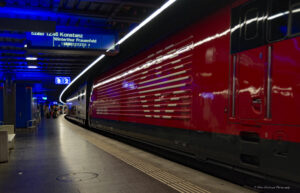 gather our luggage before heading to the train station in the building across from the airport. Another chance to grab any last minute needs as this is a shopping centre with a good selection of shops and eateries.
gather our luggage before heading to the train station in the building across from the airport. Another chance to grab any last minute needs as this is a shopping centre with a good selection of shops and eateries.
Grab the train ticket, go to the platform and if it is as quick as last year we will be on the Suisse Rail service to Romanshorn within the hour. This is a lovely relaxing rail journey taking in the beautiful Switzerland countryside and takes just over the hour. Once in Romanshorn it is a short walk around the marina to the ferry, which again is usually there waiting as we arrive. Onto the ferry for the cruise across Lake Constance to the ferry terminal at Friedrichshafen. A brief walk up the hill to the hotel and hopefully have lunch. 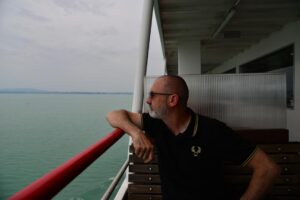
So breakfast in London, elevenses in Zurich, lunch in Friedrichshafen – that is if all goes to plan. Relax and chill out for the afternoon and check into the hotel before a nice meal in the evening sat outside a restaurant overlooking the lake and enjoying a couple of beers. Thursday will be a visit to the Messe and set up the stand and a little explore of the local area with maybe a trip to the Dornier museum near the airport. All nicely chilled for the show and fun over the weekend. 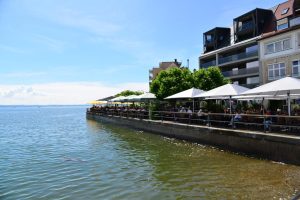
If any of you reading this are in attendance then please do come and say hello on the IOTA stand, you never know but there may be a gift waiting from the Hinckley Amateur Radio and Electronics Society (HARES) as a souvenir.

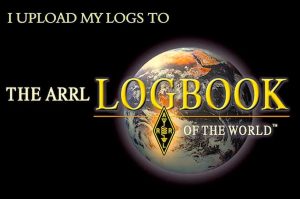
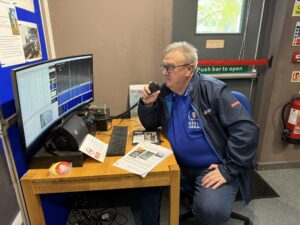 together to set up from home. This still hasn’t happened, but maybe it will in the next year. Then following a trip to
together to set up from home. This still hasn’t happened, but maybe it will in the next year. Then following a trip to 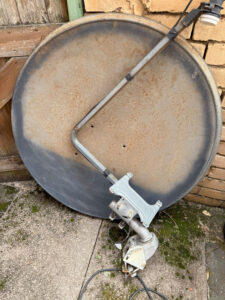 So I needed a satellite dish to start the station build. I put a question out on my Facebook profile asking if any friends had the old-style Sky TV dishes still attached to their house that they no longer use.
So I needed a satellite dish to start the station build. I put a question out on my Facebook profile asking if any friends had the old-style Sky TV dishes still attached to their house that they no longer use. 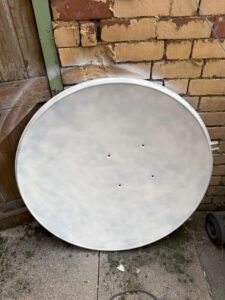 after rubbing it down and getting rid of the surface rust to make it look prettier and give better reflection, again this followed research on the best way to paint the dish.
after rubbing it down and getting rid of the surface rust to make it look prettier and give better reflection, again this followed research on the best way to paint the dish. 